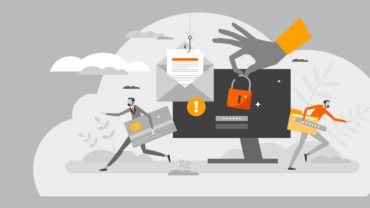“Hey, thanks.” You’ve probably said this multiple times today. Maybe you use “Thanks” in your email signature. Or you might have a favorite “thank you” emoji. These ubiquitous bits of manners show you appreciate daily interactions with others. But what do you do when you want to share a deeper sense of gratitude? Showing appreciation to your employees, your colleagues, and yes, even your superiors, not only strengthens relationships and enhances workplace culture but has a positive impact on performance. Beyond being polite, gratitude is also powerful.
Why giving thanks is important
The research is clear: gratitude is good for you, says the Harvard Business Review. It improves well-being, reduces stress, and builds resilience. It can even make you more patient. By thanking others, you acknowledge in yourself that someone has had a positive impact on your life. Living a life of gratitude has even been linked to improved heart health and sleep and decreased feelings of anxiety.
Of course, expressing your appreciation lifts the spirits of those you’re thanking, too. Who doesn’t like to be recognized for their efforts to support others? Most people go about their work conscientiously without the need for applause. It’s part of who they are and what they do. They assume the work they’re doing is valuable. However, by saying thank you out loud, it reminds them that they make contributions that are appreciated by you and the organization.
And at a time when employee retention is at a premium, your staff or colleagues are more likely to stay put when they feel recognized and appreciated.
When you communicate your thanks not just to your co-worker, but also to their manager, you’ll see additional magic happen. Managers can’t see every good thing their employees do, so when you recognize their employees, it gives them an additional source of feedback on their staff. Plus, the manager feels good too, knowing their employee is a good reflection on them.
It’s a win-win.
Spread the love
How you say thank you might be as important as why you do it. First, focus on the “what.” What did your co-worker do that makes you want to thank them? Did they deliver a report to you ahead of schedule? Did they take on extra work so your project could stay under budget? Did they surprise you with your favorite coffee when you were slammed with case prep? Getting specific about what they did will help them to recognize the impact of their simple acts of kindness.
Then move on to the effect. How did their thoughtfulness impact your day? How did it make you feel? By recognizing both the action and its effects, you reinforce their value.
After the what and the how comes the when. The right time to offer appreciation is always now. The closer your expression of gratitude is to the action that inspired it, the more meaningful it will be to the recipient.
Simply saying, “thank you” is sure to make someone smile, but here are five creative ways to show your colleagues you appreciate them:
1. Get to know each other.
What hobbies do your colleagues have outside of work that you could support with your thank you? You could pick up a box of balls for a pickleball player, a skein of yarn for a knitter, or a baseball cap for a sports fan. These do not have to be expensive gifts. The idea that you thoughtfully considered what they might like is the true value.
2. Everyone loves food.
Offering a meal can be a great way to express thanks. Not only is this a fun way to show appreciation, but it gives people a break from their routine. Take your team out for lunch, or simply grab some pizzas for the conference room!
3. Celebrate milestones.
Whether that milestone is a birthday, a work anniversary, or the successful end to a big case, all are good reasons to celebrate someone’s ongoing contributions. There is always a reason to celebrate and appreciate others.
4. Never underestimate the power of a hand-written note.
While emails, text messages, and digital chats are great for immediate communication, nothing beats the old-school style of a thank-you note. Your thanks, written in your hand, carries powerful appreciation. It not only puts a smile on the face of your colleague as they read it now but also in the future. Hand-written notes are often kept for long periods and the boost they bring has staying power when they’re read again.
5. Make it official.
Many organizations institute third-party recognition programs that combine a thank you with a point system that employees can accumulate for incentives and perks.
The domino effect
A single thank you can start a chain reaction. When you receive appreciation or recognition for your work, you’re more likely to pass on that positive feeling. Those good vibes can reverberate throughout your organization. If saying thank you is part of your firm’s culture, that appreciation can flow up, down, or sideways.
Who can you thank today?
Showing gratitude is a large part of personal and professional well-being. Explore our blog for more resources on attorney well-being.









